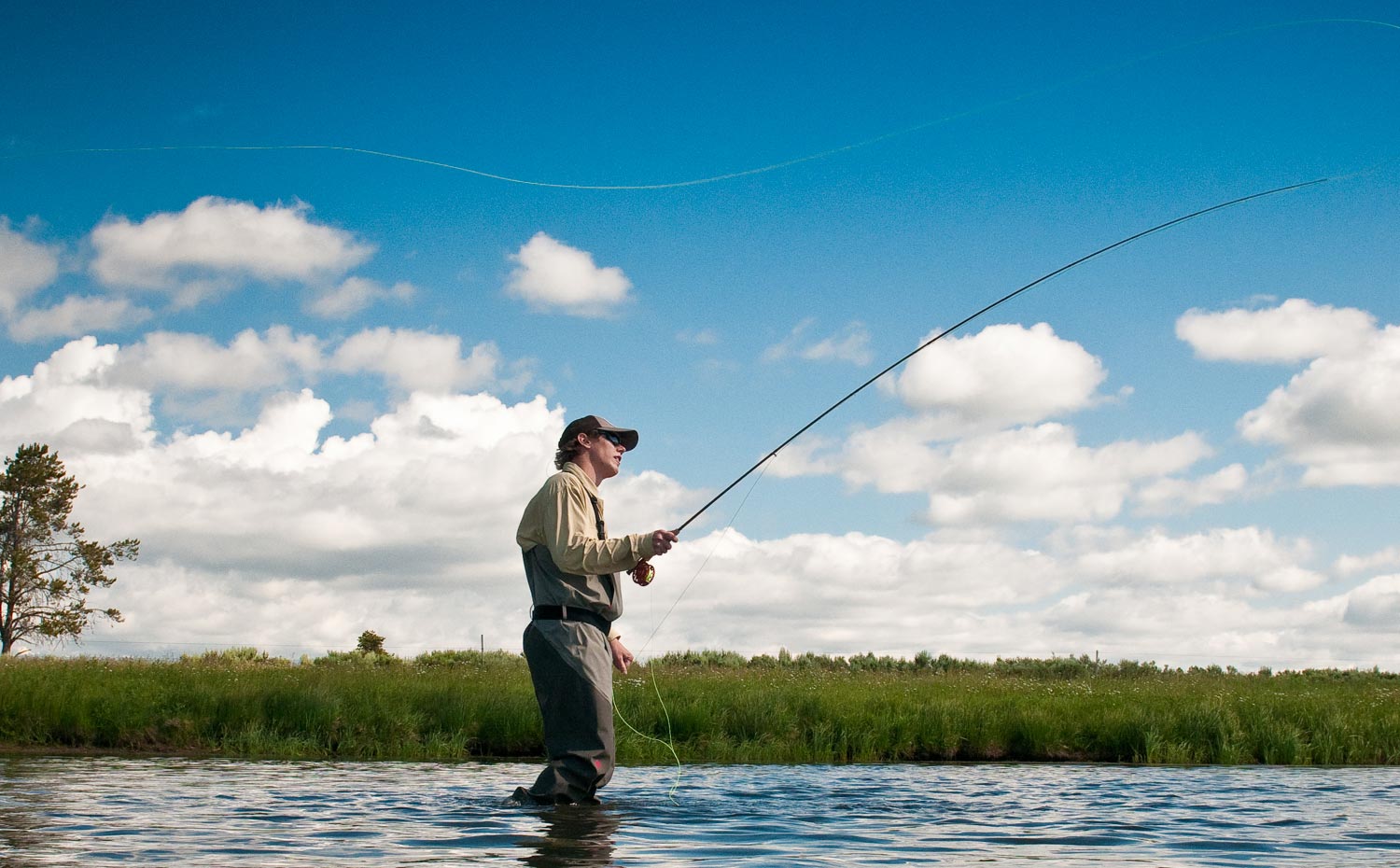By Louis Cahill
There is nothing more important about a fly cast than how it ends.
There are a lot of moving parts in a fly cast. Plenty of things have to be done right for everything to go perfectly. That being said, you can get away with a lot if you have a good stop.
If your cast feels anemic, your leader doesn’t turn over fully, your loops are big and sloppy, your line lands on the water before our fly, or you’re not getting the distance you want, I’ll bet you five dollars to a doughnut the problem is with your stop. You’re likely doing one, or all, of three things wrong. Use the following as a checklist to see if your stop is all it should be.
Three rules for a good stop.
The stop must be positive.
This is often called a hard stop and I like that term because it captures the feel of a good stop. The casting stroke should accelerate from a soft start to a hard stop at its fastest point. It should not slow to a stop and once it stops it should not falter. It should feel as if your hand has hit a wall. This is the moment when the rod flexes forward and creates the loop. If that loop does not begin well, it will not end well.
The rod tip must stop high.
Probably a lot higher than you think. The vast majority of fly casters stop the rod too late, creating an arced casting stroke, which opens the loop and causes the leader, or even the line, to pile up. This takes the energy out of the cast, deforms the loop and lets the wind take your fly where it likes.
In their minds, most casters want to point the rod at their target. It’s an easy impulse to understand, but it’s not how the fly cast works. I tell casters to picture themselves scooping up a big spoonful of whipped cream and throwing it at someone. (I usually picture Scarlett Johansson, but it’s up to you.) You would stop the spoon at 90 degrees to the target, not pointing straight at it. The same is true when stopping the rod. I tell casters to try and stop too high. It’s never happened.
Stop and hold.
Somewhere in the glorious history of fly fishing, someone used the term “stop and drop” and it stuck. While it’s true that at some point the rod tip must drop to fish the fly, it shouldn’t happen until the loop has straightened out. It is the high rod tip that anchors the line and keeps the energy in the loop. If you drop the tip while the loop is unrolling you put slack in the system and take the energy out of the cast.
Streamer fishing with friends, I’ve been asked time and again, “What line is that? It really turns the fly over.” I have to stop myself from saying, “It’s not the line,” and sounding like a smart ass. It’s not the line, it’s the stop.
If your cast isn’t behaving the way you’d like, run through this quick checklist and see if your stop is asleep on the job. I have a feeling it will help put you on some fish.
Louis Cahill Gink & Gasoline www.ginkandgasoline.com hookups@ginkandgasoline.com Sign Up For Our Weekly Newsletter!

Well stated, with clear & concise explanations. I started casting 60 years ago and you’ve just given me some good thoughts to keep in my head the next time I pick up a rod.
I picture my wife! Thanks…………..great summation.
For a “quick stop” metaphor, rather than your fist hitting a wall, long ago I heard to think about hitting a nail with a hammer…we have all done that. Put the nail on a wall just above head level, and it’s perfect
I picture my ex wife! Thanks. Being a carpenter by trade, that makes it easy for me.
keep it reel Louis! great tips as usual….
Thank you! I needed that!
I like that quote, “Stop and drop.” I think that’s what I need to remember when fishing dries. All too often my line hits the water before my fly, and subsequently spooks the fish. Thanks for the reminder, Louis!
Throwing an apple off the end of a stick seems the most mechanically accurate to me but I think the whipped cream addition is a good modifier, much like it makes both apple pie and Ms. Johannson even more appealing!
Well said, Louis!
Quoting MacAuley Lord: “…Start slow, end fast…” (to accelerate the rod).
To make a “brick wall Stop”, clench the muscles of your forearm and casting hand ~ also known as squeeze to a stop.
Once you brought Scarlett into the picture, (naked with whipped cream all over her) I forgot about everything else. Thanks for the imagery!
Pingback: • “Fly-Fishing: The Stop” – Connecticut Saltwater Fishing